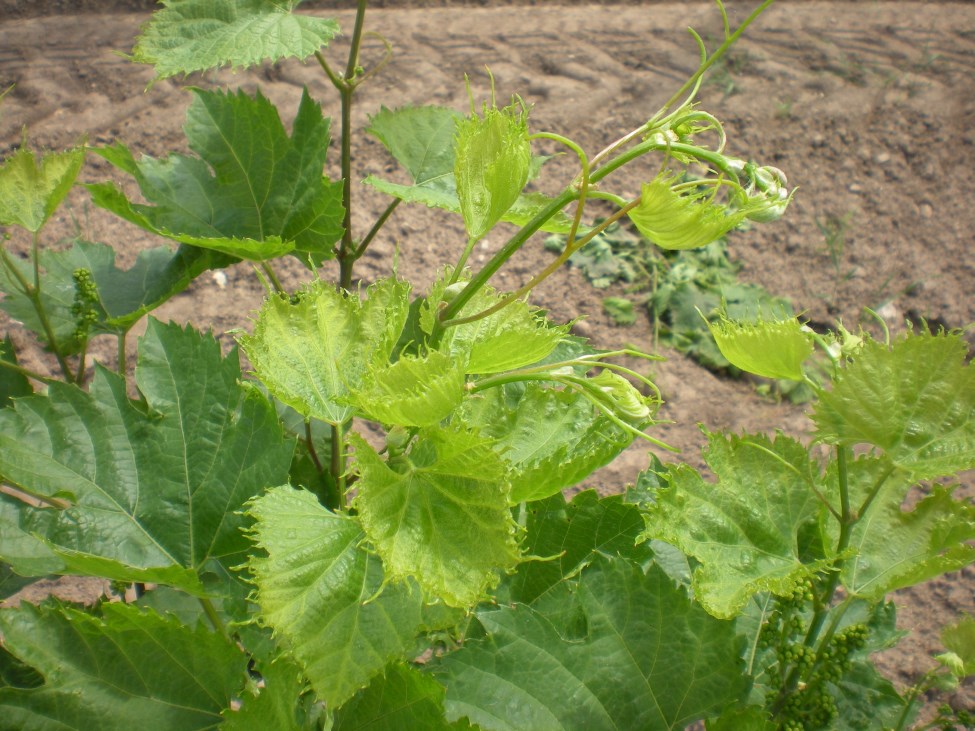Vinews
No. 3 — March 1, 2021
Contents:
Herbicide Drift Survey

The widespread adoption of GMO corn and soybeans that are resistant to synthetic auxin herbicides has resulted in an increased use of synthetic auxin herbicides (dicamba and 2,4-D). Many specialty crops are sensitive to synthetic auxin herbicides. Grapevines are extremely sensitive to very low rates of synthetic auxin herbicides (Figure 1). Injury to specialty crops is often the result of herbicide drift.
A special project group of the North Central Integrated Pest Management (IPM) Center is conducting a survey this winter to gather information on herbicide drift damage and risk-management among specialty crop growers in the North Central U.S. This survey is designed to anonymously collect data for these purposes: Measure the prevalence and economic impact of herbicide drift on specialty crops in the North Central U.S. (Iowa, Illinois, Indiana, Kansas, Michigan, Minnesota, Missouri, North Dakota, Nebraska, Ohio, South Dakota, Wisconsin); Compare trends across time and different locations; Capture grower concerns and actions relating to herbicide drift; and Document grower needs surrounding state pesticide complaint procedures, product restrictions or training, improved technology, and drift or residue research (Cassandra Brown, Program Manager, The Ohio State University).
Herbicide Drift Survey Link Survey closes April 11, 2021. This survey and more information from the North Central IPM Center is available at go.osu.edu/drift25.